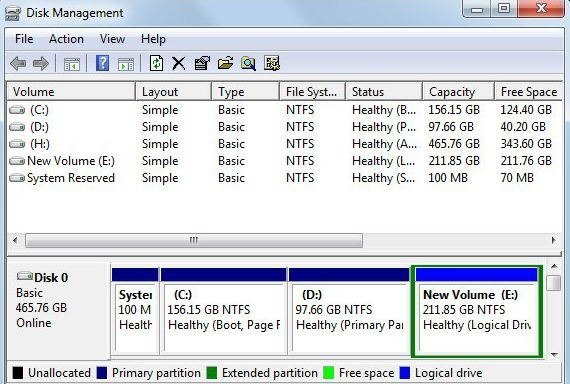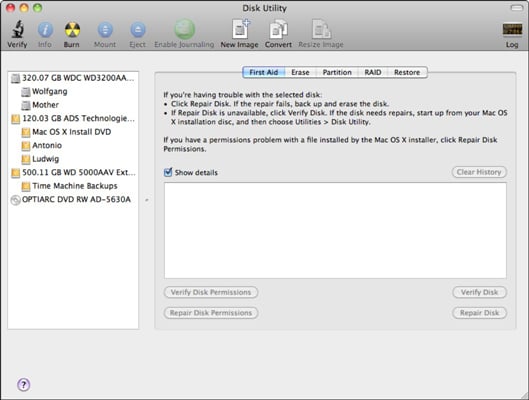
- Mac Disk Partition Free
- Mac Os Catalina Disk Utility Partition Greyed Out
- Mac Os Disk Partition Software Windows 7
It may be the Startup disk partition or any other logical partition that fails to resize via Disk Utility. In such cases, Stellar Partition Manager will help you resize the stubborn partition. This software will create the boot DMG & will start the Mac OS X in bootable environment. Oct 07, 2019 If you've always wanted to partition your Mac's hard drive so you can run a separate operating system — including the launch of macOS Big Sur — in tandem with your current one, it's surprisingly easy to do so thanks to Apple's built-in disk utility program. Here's how to partition your Mac. Stellar Partition Manager. Stellar Partition Manager is a disk utility software which conveniently manages partitions including the BOOT volume on your Mac OS X hard drive. It now resize Boot Camp. Commercial $ $ $ Mac. Best disk partition software for Mac. Partitioning software can be the safest way to reorganise or restructure your Mac's hard drive or SSD. We show you some of the best tools for getting this done. MiniTool Partition Wizard Award winning disk management utility tool for everyone. Get this safe & easy-to-use free partition software to keep your PC running at its best! Free Download. Backup & Restore Software. Professional data recovery software for iOS devices on Mac OS. MAC OS X 10.5 and above.
When you attach a storage disk to a Mac with the purpose of erasing or repartitioning it, you'll be presented with the option of selecting one of the three available partition maps: GUID Partition Map, Master Boot Record, and Apple Partition Map. In this article we will explain what a partition scheme is and which one to pick when formatting a drive.
What Is a Partition?
The fixed-sized subset of a disk drive treated as an individual unit by the operating system (in our case macOS) is defined as a partition. On every drive there are multiple partitions, and for this you will need a partition table or partition map – maintained by the operating system – to detail the status of the partitions.
Download CleanMyMac X from MacPaw’s website and clean up to 500MB of junk data from your computer while enjoying all the features of the software without major limitations.
GUID Partition Map

This is a standard for the layout of the partition table on a storage disk using globally unique identifiers (GUIDs). As part of the Unified Extensible Firmware Interface (UEFI) standard, GUID is a bootable standard for systems with EFI firmware such as macOS. Non-Intel Macs won't support this bootable standard, hence the only option available to them is the Apple Partition Map (APM).
Apple Partition Map
Used on disks formatted for use with 68k and PowerPC Macs, the Apple Partition Map is the scheme that defines how the data is organized. Starting with OS X Tiger, both APM and GUID partitions can be used for accessing volumes, but PowerPC-based Macs can only boot from APM disks. While Intel-based Macs generally boot from a GUID Partition Table, they are all able to start the operating system from APM and Master Boot Record (MBR) using the BIOS-Emulation called EFI-CSM.
Master Boot Record
Introduced by IBM in 1983 to support the 10MB hard disk, the Master Boot Record is a type of boot sector developed for use with IBM PC systems. It is currently used for Windows partitions formatted as MS-DOS (FAT) or ExFAT.
Choosing a Partition Map
Now you know which partitioning map is which, the next time you insert an external drive or want to partition the built-in storage disk of the Mac, it will be easier to choose between the available options.
When formatting or erasing a volume with Disk Utility, you'll see a format menu prompt asking you to choose from:
- Mac OS Extended (Journaled)
- Mac OS Extended (Journaled, Encrypted)
- Mac OS Extended (Case-sensitive, Journaled)
- Mac OS Extended (Case-sensitive, Journaled, Encrypted)
- MS-DOS (FAT)
- ExFAT
- APFS (macOS High Sierra’s new file system)
- APFS (Encrypted)
- APFS (Case-sensitive)
- APFS (Case-sensitive, Encrypted).
Be aware that APFS is compatible only with macOS High Sierra and higher, so earlier versions of OS X or macOS won't mount an APFS volume. If you want maximum reach, Mac OS Extended (Journaled) is the right choice.
Below the file system format, the Disk Utility dialog box will list another contextual menu, the partition map scheme, which gives you another great tool to create targeted volumes. If you are looking to format a disk that will be shared with Windows users, the MBR scheme and MS-DOS (FAT) are the best choices. For drives used with Intel-based Macs only, the GUID Partition Map should the option to go for.
If you don't see the partition map scheme option, it is likely because Disk Utility doesn't list all volumes. This will prohibit Disk Utility from erasing the disk and show you an error message. To address this issue, you should click on the View button located in the top-left side of the Disk Utility dialog box and select “Show All Volumes”. From that point on, Disk Utility will ask for your partition map preference, and the formatting process will be smoother.
Mac Disk Partition Free
Best Mac Optimization Software of 2020
| Rank | Company | Info | Visit |
| |||
| |||
|
Get the Best Deals on Mac Optimization Software
Stay up to date on the latest tech news and discounts on Mac optimization software with our monthly newsletter.
Disk Utility User Guide
Partitioning a disk divides it into individual sections, each of which acts as a separate volume.
However, with APFS, you shouldn’t partition your disk in most cases. Instead, create multiple APFS volumes within a single partition. With the flexible space management provided by APFS, you can even install another version of macOS on an APFS volume.
Important: If you’re partitioning your internal physical disk because you want to install Windows, use Boot Camp Assistant instead. Do not use Disk Utility to remove a partition that was created using Boot Camp Assistant. Instead, use Boot Camp Assistant to remove the partition from your Mac.
Add a partition
Important: As a precaution, it’s best to back up your data before creating new partitions on your device.
In the Disk Utility app on your Mac, select a volume in the sidebar, click the Partition button , then click Partition.
Internal storage devices appear below the Internal section in the sidebar. External devices appear below the External section in the sidebar.
When you select a volume that already has data on it, the pie chart shows a shaded area representing the amount of data on the volume and an unshaded area representing the amount of free space available for another volume. Disk Utility also shows whether the volume can be removed or resized.
Note: If you see a small volume with an asterisk, the partition is smaller than can be represented at the correct scale in the chart.
Click the Add button .
Type a name for the volume in the Name field.
For MS-DOS (FAT) and ExFAT volumes, the maximum length for the volume name is 11 characters.
Click the Format pop-up menu, then choose a file system format.
Enter the size or drag the resize control to increase or decrease the size of the volume.
Click Apply, click Partition, then click Continue.
Click Show Details to view the step-by-step process of creating a new volume.
After the volumes are created, click Done.
After you partition a storage device, an icon for each volume appears in both the Disk Utility sidebar and the Finder sidebar.
Delete a partition
WARNING: When you delete a volume or partition, all the data on it is erased. Be sure to back up your data before you begin.
In the Disk Utility app on your Mac, select a volume in the sidebar, click the Partition button , then click Partition.
In the pie chart, click the partition you want to delete, then click the Delete button .
If the Delete button is dimmed, you can’t delete the selected partition.
Click Apply, then click Partition.
After the volume is deleted, click Done.
Erase a partition
Mac Os Catalina Disk Utility Partition Greyed Out
In the Disk Utility app on your Mac, select the volume you want to erase in the sidebar.
Click the Erase button , then click Erase.
If the Erase button is dimmed, you can’t erase the selected volume.
After the volume is erased, click Done.
Enlarge a partition on a storage device

Mac Os Disk Partition Software Windows 7
If you have multiple partitions on a device and one of them is running out of space, you may be able to enlarge it without losing any of the files on it.
To enlarge a volume, you must delete the volume that comes after it on the device, then move the end point of the volume you want to enlarge into the freed space. You can’t enlarge the last volume on a device.
WARNING: When you delete a volume or partition, all the data on it is erased. Be sure to back up your data before you begin.
In the Disk Utility app on your Mac, select a volume in the sidebar, then click the Partition button .
In the pie chart, select the partition you want to delete, then click the Delete button .
Click Apply.
The partition is removed, reformatted, and all free space is assigned to the previous partition.
Click Done.